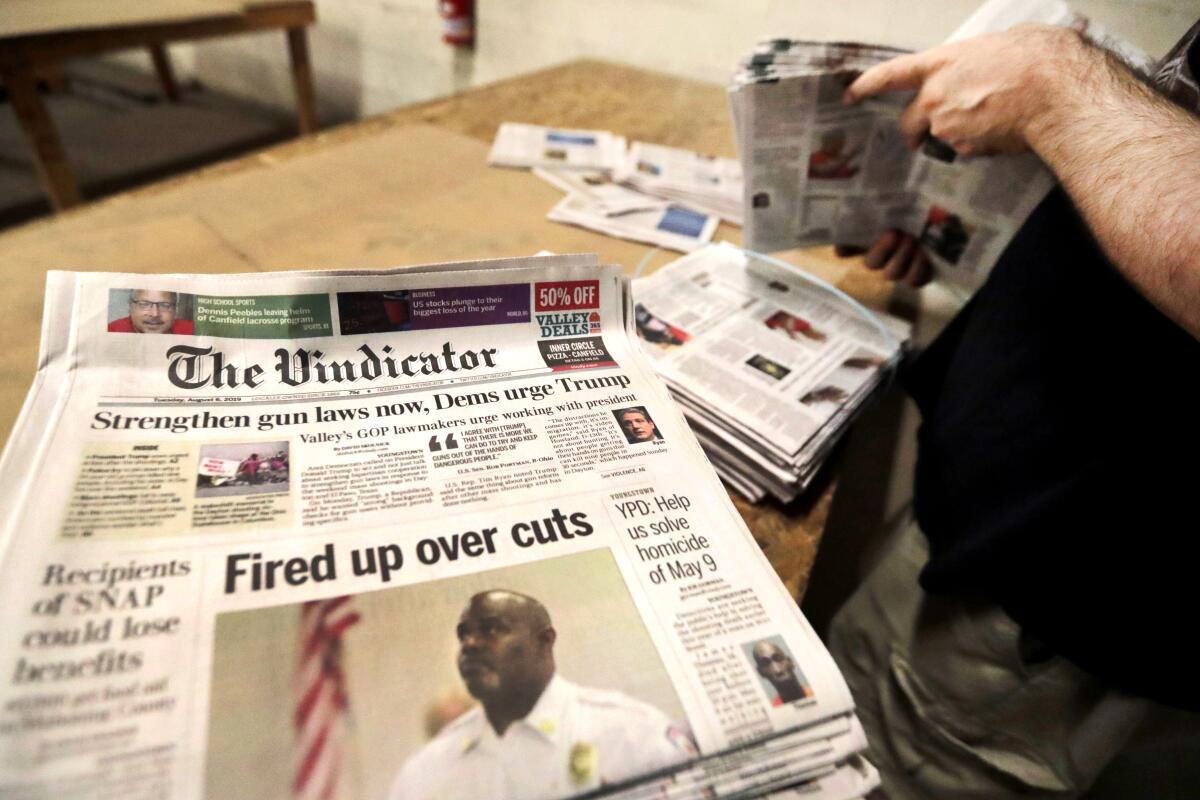The Single Strategy To Use For News Articles
Wiki Article
News Articles - Questions
Table of ContentsThe Main Principles Of News Articles Excitement About News ArticlesThe Facts About News Articles UncoveredThe 9-Minute Rule for News ArticlesThe Buzz on News Articles
Excellent understanding of different subjects provides trainees a competitive edge over their peers. Although electronic and social media are readily obtainable, we ought to not fail to remember how crucial it is to read the newspapers. Moms and dads have to attempt and inculcate the habit of checking out a paper as a day-to-day routine to continue the heritage of the adored print tool.News stories also contain at least one of the complying with essential characteristics relative to the intended target market: distance, importance, timeliness, human rate of interest, curiosity, or repercussion.
Within these limits, information stories likewise intend to be extensive. Amongst the larger and extra recognized newspapers, fairness and balance is a major factor in offering info.
Papers with a worldwide target market, for instance, have a tendency to make use of an extra formal design of creating. The certain options made by a news electrical outlet's editor or editorial board are commonly gathered in a design overview; usual style overviews consist of the and the US Information Style Publication. The primary objectives of information writing can be summed up by the ABCs of journalism: accuracy, brevity, and clearness.
The 10-Second Trick For News Articles
As a rule, reporters will not make use of a long word when a short one will do. They make use of subject-verb-object building and construction and vivid, energetic prose (see Grammar). They supply narratives, instances and metaphors, and they rarely depend on generalizations or abstract concepts. News writers attempt to avoid making use of the very same word extra than when in a paragraph (occasionally called an "resemble" or "word mirror").
Headlines in some cases omit the subject (e.g., "Leaps From Watercraft, Catches in Wheel") or verb (e.g., "Feline woman fortunate"). A subhead (also subhed, sub-headline, subheading, caption, deck or dek) can be either a secondary title under the primary heading, or the heading of a subsection of the write-up. It is a heading that precedes the primary text, or a team of paragraphs of the primary message.

of an article subject, informant, or interviewee), it is referred to as a pulled quote or draw quote. Additional signboards of any one of these types may show up later in the write-up (particularly on succeeding web pages) to tempt additional reading. Journalistic websites occasionally use computer animation methods to swap one billboard for one more (e.g.
The 7-Minute Rule for News Articles
Such billboards are also made use of as guidelines to the short article in various other areas of the publication or site, or as advertisements for the piece in other magazine or sites. Press launch of the Swiss government. Typical structure with title, lead paragraph (recap in bold), other paragraphs (details) and get in touch with details.
Example of a hard-lead paragraph NASA is suggesting one more room project. The agency's spending plan request, revealed today, included a strategy to send out another objective to the Moon. This time around the agency intends to establish a long-lasting center as a jumping-off factor for other room experiences. The budget plan requests about $10 billion for the job.
An "off-lead" is the 2nd most important front page news of the day. To "bury the lead" is to begin the article with background details or information of secondary value to the readers, forcing them to check out more deeply into a write-up than they need to have to in order to discover the crucial points.
The Best Guide To News Articles
Common use is that one or 2 sentences each create their own paragraph. Reporters usually describe the organization or structure of a newspaper article as an inverted pyramid. The crucial and most interesting components of a tale are placed at the start, with sustaining information following in order of reducing significance.It allows individuals to explore a topic to only the deepness that their curiosity takes them, and without the charge of details or nuances that they can think about unnecessary, however still making that details available to much more interested readers. The inverted pyramid framework likewise makes it possible for short articles to be cut to any kind of approximate size throughout design, to suit the room available.
Some writers start their stories with the "1-2-3 lead", yet there are several kinds of lead available. A kicker can refer to several things: The look at these guys last story in the information program; a "happy" tale to end the show.
Longer articles, such as magazine cover write-ups and the items that lead the inside areas of a newspaper, are referred to as. Feature stories differ from straight information in several means. Foremost is the absence of a straight-news lead, the majority of the moment. Rather of offering the significance of a tale up front, feature authors might try to lure readers in.
News Articles for Dummies
A feature's first paragraphs typically associate a fascinating moment or occasion, as in an "anecdotal lead". From the particulars of a person or episode, its sight swiftly broadens to abstract principles regarding the story's topic.
The Editor's Toolbox: A Referral Overview for Beginners and Professionals (2001) Allan M. Siegal and William G. Connolly. The New York Times Manual of Design and Usage: The Official Style Guide Made Use Of by helpful site the Writers and Editors of the World's Many Reliable Paper (2002) M. L. Stein, Susan Paterno, and R.
Report this wiki page